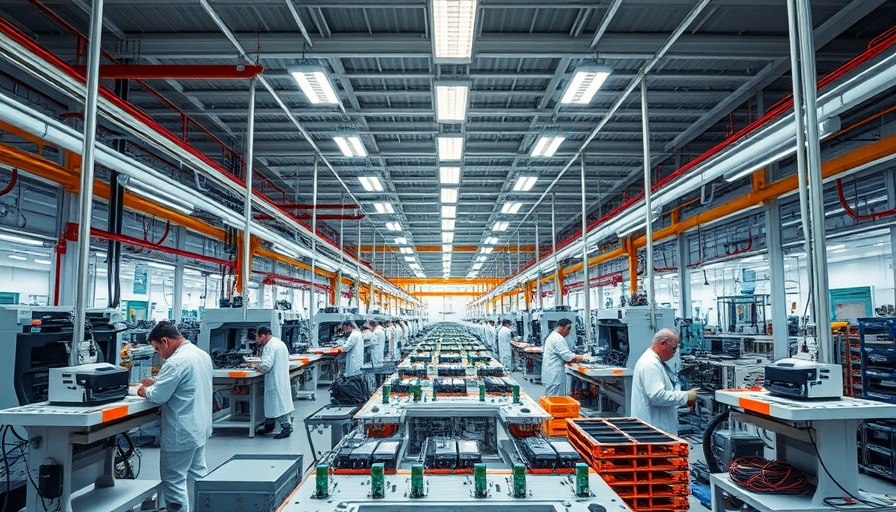
Is Manufacturing Making a Comeback in the US?
As the conversation surrounding the resurgence of manufacturing jobs in the United States intensifies, business leaders and economists are intrigued by the potential implications for the country's economic landscape. Recently, during an episode of Small Business Breakdown, experts debated not only the feasibility of bringing manufacturing back onshore but also the dynamics of the labor market that support or hinder this movement.
The Debate: Will Companies Return to Domestic Manufacturing?
The panel discussion posed significant questions: Will manufacturers actually relocate their operations back to US soil? With rising operational costs in overseas markets, coupled with increasing shipping expenses and supply chain disruptions, many firms are re-evaluating their overseas dependencies. “Bringing manufacturing home may not only reduce shipping times but strengthen domestic job markets,” one panelist noted. However, the overarching issue remains whether there is a skilled workforce ready to step into these roles.
Labor Market Challenges
Addressing the challenges of filling manufacturing vacancies, experts highlighted the perceptions of Gen Z towards these jobs. There is a growing concern about whether this demographic, known for valuing meaningful work aligned with their passions, will embrace traditional manufacturing roles. Many young workers gravitate towards tech and service sectors, raising the question: How can companies market these positions to attract younger talent?
Historical Context: Manufacturing's Decline and Rebirth
The decline of American manufacturing over the past several decades has been well-documented, particularly as globalization took hold in the 1990s. However, historical context is crucial in understanding today’s landscape. The U.S. saw a significant decline in production jobs due to cheaper overseas labor that became attractive to many corporations. Now, the tides may be shifting once again. As reported by the SBA, manufacturing loans have surged significantly, possibly signalling a shift in sentiment among small businesses towards rebuilding local manufacturing capabilities.
Future Predictions: Trends Shaping American Manufacturing
Looking ahead, several trends could shape the future of manufacturing in the U.S. Firstly, advancements in automation may render some traditional roles obsolete while simultaneously creating new opportunities in tech-oriented fields. Moreover, the increasing focus on sustainable practices could drive manufacturers to prioritize local production to align with eco-friendly standards. Finally, as younger generations increasingly demand transparency and ethical practices, businesses must adapt their operations accordingly to meet these evolving expectations.
Unique Value of Understanding These Trends
For business leaders and decision-makers, grasping the implications of a potential manufacturing resurgence is critical. It can inform strategic planning, investment decisions, and talent acquisition efforts. Understanding the landscape may also help in positioning a company competitively as market dynamics evolve, ultimately leading to improved operational efficiencies and economic growth.
Moving Forward: Steps for Business Leaders
As we navigate this period of potential transformation, it’s essential for leaders to remain proactive. Business owners should consider strategies to enhance the appeal of manufacturing positions to younger workers. Initiatives may include modernizing work environments, offering competitive wages, and providing educational opportunities to equip the workforce with necessary skills. Such investments can yield long-term benefits—both to the companies and to the economy at large.
Ultimately, understanding and engaging in the conversation around the revitalization of American manufacturing is essential for a thriving future. As trends continue to unfold, stay informed and prepared to respond to a changing landscape.
 Add Row
Add Row  Add
Add 



Write A Comment